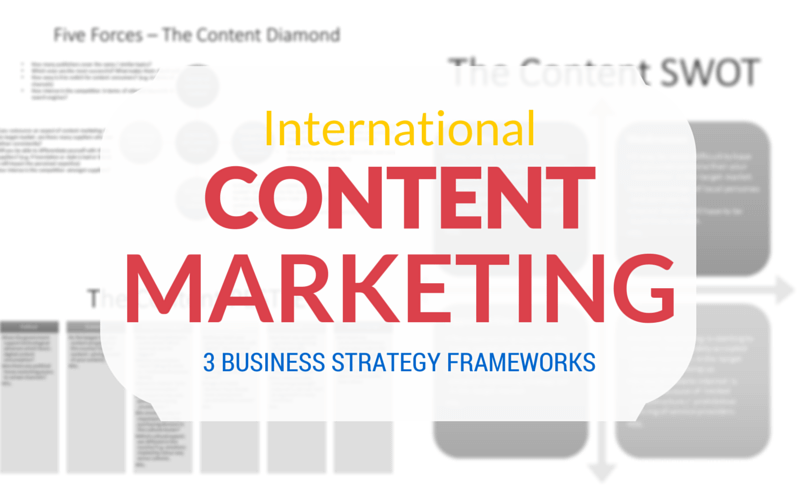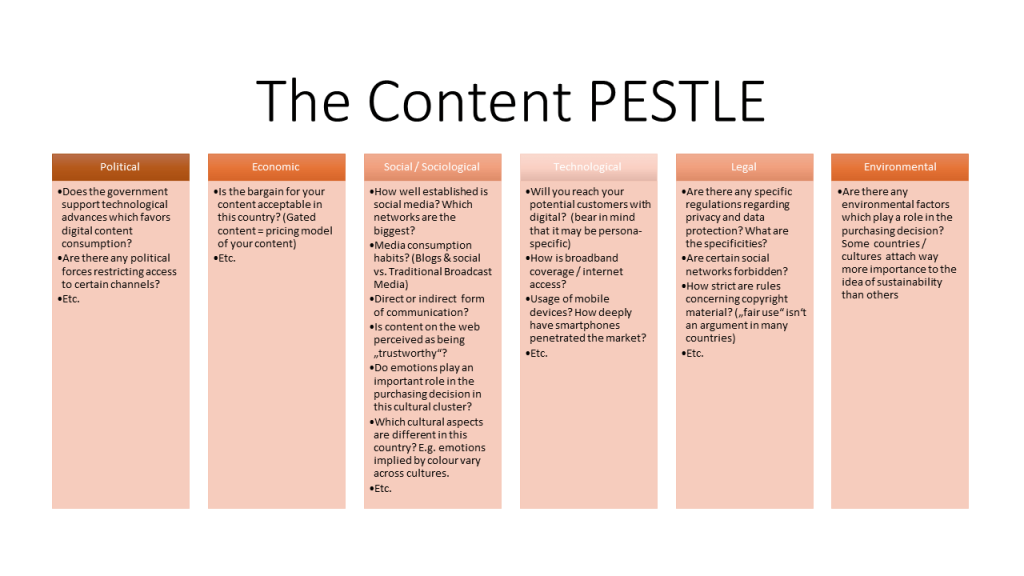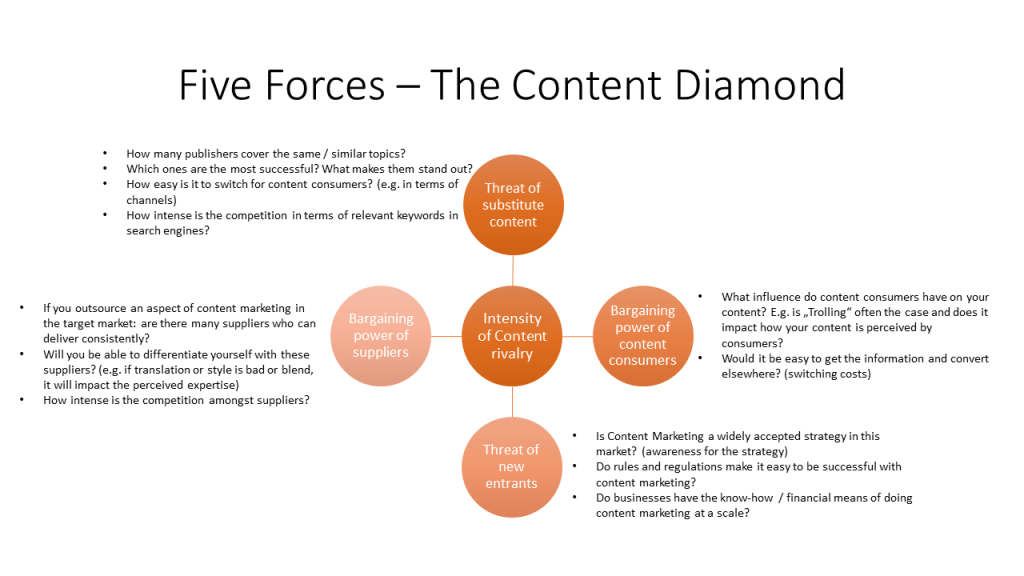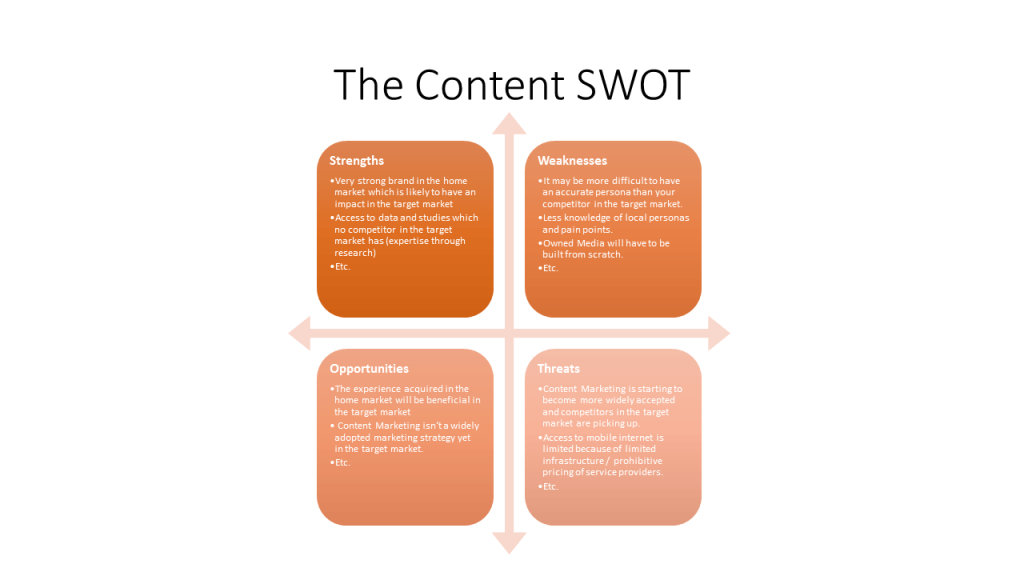International Content Marketing is trickier than you may think. It’s not enough to translate your content! Here are 3 frameworks you might want to use when planning your strategy.
Going international with content marketing sounds easy (just translate it, right?) but it actually takes a lot more preparation than you might expect. In this post, we’ll have a look at three frameworks with which you’ll be better prepared if you want to conquer a foreign market with your content.
International Content Marketing: don’t just translate, localize!
I’ve seen quite a few American businesses putting out content on foreign markets and taking for granted that the content marketing strategies and tactics would work just as they do in the US. Back when I was a Msc student in international marketing, the one thing my teacher said time and time again when we were going over cases and simulating internationalizations was: „Foreign is not home with another language!“ This is especially true for businesses looking to conquer new markets with a content marketing strategy.
We went over three strategic frameworks over and over again, the PESTLE model, the SWOT and Porter’s Five Forces, before creating fictional marketing plans. In this post I want to propose how these frameworks can be adapted when planning to conquer new geographical markets with content marketing as a strategy. Quite a few could have been way more successful if a content-based approach of these frameworks had been done before going into content production and promotion. (You might want to check out Pam Didner’s 4 P’s of global content marketing in this context.)
These models should be used in order to evaluate the potential success of a content marketing strategy in the target market by:
- identifying potential factors impacting the content strategy on a tactical and strategic level,
- evaluating the competitive context in terms of content as a market in the target market, from both the consumer and business perspective
- and, drawing from these, outlining an adapted content marketing strategy on multiple levels.
Let’s have a look at the first model, the PESTLE model.
1 – The PESTLE model
The PESTLE model, which you might also know under the acronyms PEST, PESTEL, STEEPLE or DEEPLIST, is one of the most famous models in business strategy. It is used to examine the macro-environment in which a business operates and to bear in mind which external factors may have an impact on business performance and strategy. This model can and should be adapted in the context of „content as a market“. Take a look at the following graph which details the different factors and which questions ought to be asked.
(Click to zoom in)
Let’s take an example to showcase how these factors can impact a content marketing strategy.
Over here in Germany, people are traditionally very sensitive to data privacy, even more so since the NSA scandal. If, let’s say a marketing automation software wants to get into the German market, they’ll have to consider not only the fact that their potential customers (German businesses) are going to ask about where the data goes (in which countries ist he data stored?). If you are not prepared for this mindset, you’re going to struggle figuring out why visitors don’t convert to leads and customers…
Also, there are very strict (some might say absurd) rules when it comes to publishing on the web in Goethe’s country. As a matter of fact, you can get big fine just because you embedded a slideshare presentation in one of your blogposts because these sharing buttons within the frame transfer data to social networks without users knowing about it.
Finally, B2B deciders still read a lot traditional magazines and newspapers and they tend to read and trust blogs and they tend to use social media a lot less than their American counterparts. Therefore, for content promotion purposes, you need to include PR a lot more in your content marketing plan.
In this case, legal, political and even sociological factors are huge for this business.
There is an excellent article on Smartinsights about this model with a whole lot of examples which I would encourage you to have a look at, in case you want to dig deeper into this one.
2 – Porter’s (Content) Diamond
Porter’s Diamond is a model used to evaluate the attractiveness of a market or sector by looking at factors which will tell you how intense the rivalry is. If we look at it through a content marketers eye, we’ll have to look at 4 factors:
- Threat of substitute content
- The bargaining power of content consumers
- The threat of new entrants
- And the bargaining power of content suppliers.
The analysis of these factors will paint a picture of how attractive it ist o enter this market with a content marketing strategy. Have a look at the following graph, which details the framework and the right questions to ask:
(Click to zoom in)
Summarize with a Content SWOT
The SWOT is probably the most well-known and used model in business strategy. It’s basically a summary and an analysis of external and internal factors.
Summarize these internal and external factors in a content SWOT, which will showcase the opportunities which you can act upon, threats you should keep an eye on, weaknesses you should work on, the strenghts you can leverage. An example of what a content swot would look like you say?
(Click to zoom in)
Also take a look at this nice example from Hubspot
If you run these frameworks in the planning process, the chances of making strategic and tactical errors are going to diminish. Run these models also for your product / service / business sector and you will have solid elements at your disposal to make a successful entry in a foreign market with a content marketing strategy.






